-
 Bitcoin
Bitcoin $115000
0.12% -
 Ethereum
Ethereum $3701
4.50% -
 XRP
XRP $3.081
2.99% -
 Tether USDt
Tether USDt $0.0000
-0.01% -
 BNB
BNB $767.9
1.45% -
 Solana
Solana $169.5
3.13% -
 USDC
USDC $0.9999
0.01% -
 Dogecoin
Dogecoin $0.2106
4.30% -
 TRON
TRON $0.3334
1.62% -
 Cardano
Cardano $0.7564
2.54% -
 Stellar
Stellar $0.4165
0.76% -
 Hyperliquid
Hyperliquid $38.75
0.25% -
 Sui
Sui $3.593
3.00% -
 Chainlink
Chainlink $17.08
3.59% -
 Bitcoin Cash
Bitcoin Cash $573.6
4.35% -
 Hedera
Hedera $0.2508
-0.84% -
 Avalanche
Avalanche $23.07
6.46% -
 Ethena USDe
Ethena USDe $1.001
-0.02% -
 Litecoin
Litecoin $120.8
8.17% -
 UNUS SED LEO
UNUS SED LEO $8.943
-0.32% -
 Toncoin
Toncoin $3.400
-5.60% -
 Shiba Inu
Shiba Inu $0.00001255
1.54% -
 Uniswap
Uniswap $9.908
6.32% -
 Polkadot
Polkadot $3.718
2.10% -
 Monero
Monero $303.0
-0.74% -
 Dai
Dai $0.9999
-0.02% -
 Bitget Token
Bitget Token $4.392
0.91% -
 Cronos
Cronos $0.1403
6.31% -
 Pepe
Pepe $0.00001076
1.13% -
 Aave
Aave $267.2
1.80%
What is the basic principle of USDT trading?
USDT trading uses the stablecoin Tether, pegged to the US dollar, to buy/sell other cryptos or fiat. Its stability offers a hedge against volatile markets, but risks like de-pegging and exchange security must be considered.
Mar 17, 2025 at 05:45 am
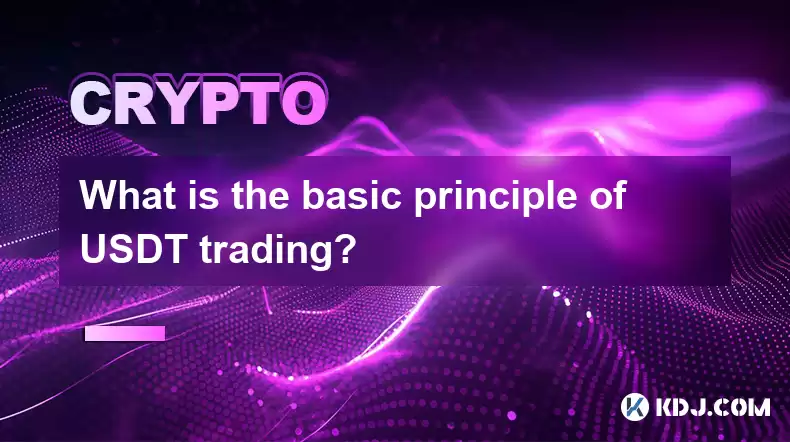
Key Points:
- USDT trading operates on the principle of exchanging Tether (USDT), a stablecoin pegged to the US dollar, for other cryptocurrencies or fiat currencies.
- The value of USDT is theoretically stable, unlike volatile cryptocurrencies like Bitcoin or Ethereum. This stability is central to its trading mechanism.
- USDT trading pairs are available on various cryptocurrency exchanges, facilitating easy conversion between USDT and other assets.
- Understanding the risks associated with USDT, including the potential for de-pegging and exchange-specific risks, is crucial for safe trading.
- Successful USDT trading requires a grasp of fundamental and technical analysis, risk management, and understanding the specific exchange's platform and fees.
What is the basic principle of USDT trading?
USDT, or Tether, is a stablecoin aiming to maintain a 1:1 peg with the US dollar. The core principle of USDT trading hinges on this stability. Unlike volatile cryptocurrencies, whose prices fluctuate significantly, USDT theoretically offers a stable asset for trading and hedging against market volatility. Traders use USDT to buy and sell other cryptocurrencies, minimizing exposure to price swings during periods of market uncertainty.
How does USDT trading work on exchanges?
Most major cryptocurrency exchanges list USDT trading pairs. This means you can directly exchange USDT for other cryptocurrencies (like Bitcoin, Ethereum, Litecoin, etc.) or even fiat currencies (like USD, EUR) where available. The trading process mirrors that of other cryptocurrency pairs: you place buy or sell orders at a specific price, and the order executes when a matching order is found. The exchange acts as an intermediary, facilitating the transaction.
What are the different types of USDT trading?
While the underlying principle remains the same, USDT trading can involve different strategies. Spot trading involves buying and selling USDT at the current market price. Margin trading allows traders to leverage their capital, potentially magnifying profits but also increasing risk. Futures and options trading on USDT, while less common, offer more complex trading strategies with higher potential rewards and risks. Each type necessitates a different level of understanding and risk tolerance.
What are the risks involved in USDT trading?
Despite its perceived stability, USDT trading carries inherent risks. The primary risk is the potential de-pegging of USDT from the US dollar. While Tether maintains it holds sufficient reserves to back its tokens, any loss of confidence or regulatory action could lead to a significant drop in USDT's value. Furthermore, the security and reliability of the exchange where you trade USDT is crucial. Exchange hacks or insolvency could result in the loss of your funds. Finally, market manipulation, although less prevalent with a stablecoin, remains a potential risk.
How to mitigate risks in USDT trading?
Risk mitigation in USDT trading starts with choosing reputable and well-established exchanges with robust security measures. Diversifying your portfolio across multiple exchanges and assets is crucial. Never invest more than you can afford to lose. Employing sound risk management techniques, such as setting stop-loss orders to limit potential losses, is paramount. Staying informed about news and developments affecting Tether and the cryptocurrency market is also essential. Regularly review your trading strategies and adapt them based on market conditions.
What are the advantages of using USDT for trading?
The primary advantage is its relative stability compared to other cryptocurrencies. This allows traders to enter and exit positions more strategically, avoiding significant price swings. USDT provides a convenient medium of exchange for buying and selling other cryptocurrencies, offering a stable base for trading operations. Its widespread availability on most exchanges simplifies the trading process, allowing easy access to a wide range of crypto assets. Furthermore, using USDT can facilitate faster transactions compared to using fiat currencies.
What are the disadvantages of using USDT for trading?
Despite its advantages, USDT trading has potential drawbacks. The primary concern is the ongoing debate surrounding Tether's reserves and its potential for de-pegging. This uncertainty introduces a level of risk that is not present with traditional fiat currencies. While the trading fees associated with USDT are usually comparable to other cryptocurrencies, they can still impact profitability, especially for high-frequency traders. Furthermore, the regulatory landscape surrounding stablecoins is constantly evolving, potentially impacting the future of USDT and its use in trading.
What are the best practices for USDT trading?
Begin with thorough research and education. Understand the risks involved and develop a solid trading strategy. Choose a reputable exchange with a good track record of security and liquidity. Start with small amounts to gain experience before investing significant capital. Always keep your private keys secure and utilize two-factor authentication. Regularly monitor your portfolio and adjust your strategy as needed. Keep up-to-date with market news and regulatory developments affecting Tether and the cryptocurrency market.
Frequently Asked Questions:
Q: Is USDT trading safe?
A: While USDT offers relative stability compared to other cryptocurrencies, it is not without risk. De-pegging, exchange security breaches, and regulatory uncertainty are all potential threats. Safe USDT trading requires diligent risk management and careful selection of exchanges.
Q: How can I buy USDT?
A: You can buy USDT on most major cryptocurrency exchanges. The process typically involves creating an account, verifying your identity, depositing funds (either fiat currency or another cryptocurrency), and then placing a buy order for USDT.
Q: What are the fees associated with USDT trading?
A: Fees vary depending on the exchange. They typically include trading fees (a percentage of the transaction value) and potentially withdrawal fees. Check your chosen exchange's fee schedule before trading.
Q: Can I use USDT for anything other than trading?
A: Yes, USDT can be used for various purposes within the cryptocurrency ecosystem, including storing value, making payments, and participating in decentralized finance (DeFi) applications. However, its primary use remains as a stable trading pair.
Q: Is USDT regulated?
A: The regulatory status of USDT and stablecoins in general varies across jurisdictions. Some regulators are actively scrutinizing stablecoins, while others have yet to establish clear regulatory frameworks. It's crucial to stay updated on the regulatory developments in your region.
Disclaimer:info@kdj.com
The information provided is not trading advice. kdj.com does not assume any responsibility for any investments made based on the information provided in this article. Cryptocurrencies are highly volatile and it is highly recommended that you invest with caution after thorough research!
If you believe that the content used on this website infringes your copyright, please contact us immediately (info@kdj.com) and we will delete it promptly.
- Shiba Inu's Ranking: What's Happening with the Cryptocurrency?
- 2025-08-05 19:10:13
- Cryptos Under $1: BlockchainFX vs. Shiba Inu - What's the Hype?
- 2025-08-05 19:10:13
- MYX Finance Price Surge: Is the Stock Jump Justified?
- 2025-08-05 18:30:12
- Crypto, CeFi, and Trust Gaps: Why the Issues Persist in 2025
- 2025-08-05 18:30:12
- Solana Memecoin Launchpads: A Wild Ride with LetsBONK.fun Leading the Charge
- 2025-08-05 17:30:12
- Crypto Volatility & Token Unlocks: Navigating the Storm
- 2025-08-05 16:30:13
Related knowledge
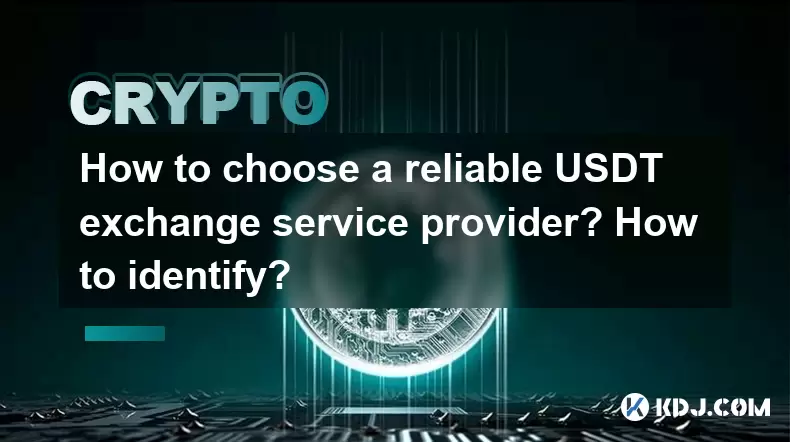
How to choose a reliable USDT exchange service provider? How to identify?
Jun 12,2025 at 03:15pm
Understanding the Role of USDT in Cryptocurrency TradingUSDT (Tether) is one of the most widely used stablecoins in the cryptocurrency market. It is d...
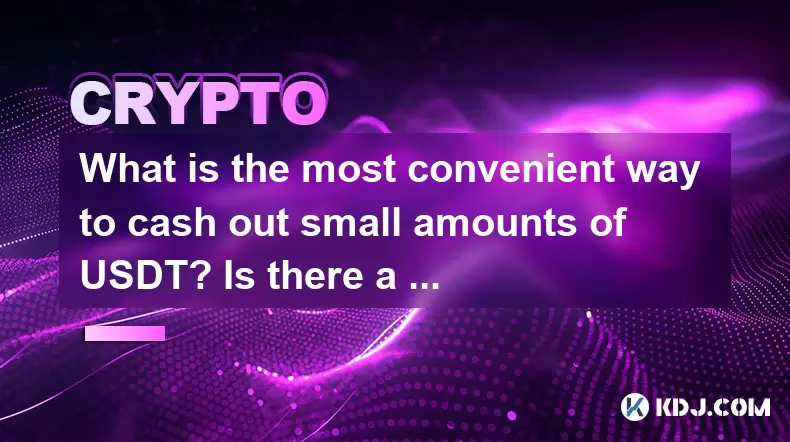
What is the most convenient way to cash out small amounts of USDT? Is there a shortcut?
Jun 11,2025 at 11:00pm
Understanding the Need to Cash Out Small USDT AmountsCashing out small amounts of USDT can be a challenge for many crypto users. Traditional methods o...
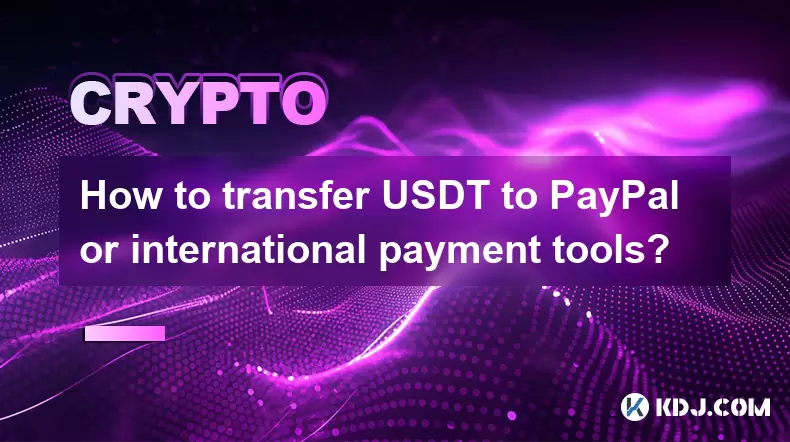
How to transfer USDT to PayPal or international payment tools?
Jun 15,2025 at 05:28am
Understanding the Basics of USDT and PayPal IntegrationUSDT (Tether) is a stablecoin pegged to the US dollar, offering blockchain-based value transfer...
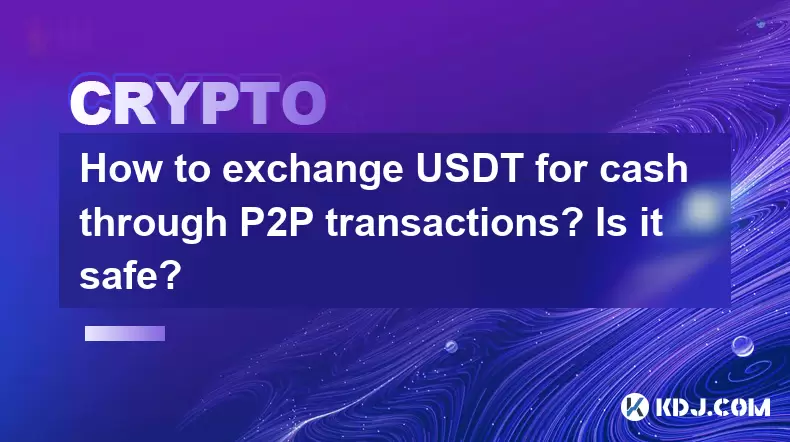
How to exchange USDT for cash through P2P transactions? Is it safe?
Jun 18,2025 at 07:56am
Understanding USDT and P2P TransactionsTether (USDT) is a stablecoin pegged to the value of the US dollar, making it a popular choice for users who wa...
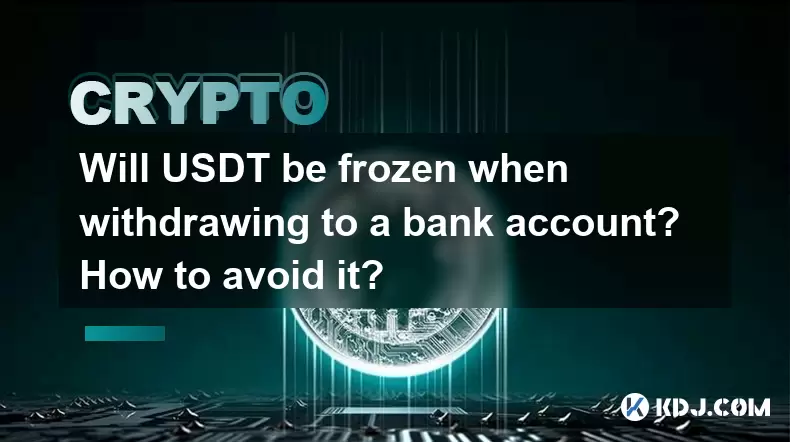
Will USDT be frozen when withdrawing to a bank account? How to avoid it?
Jun 15,2025 at 10:03am
Understanding USDT Withdrawals and Bank Account Freezing RisksWhen users decide to withdraw USDT (Tether) to a bank account, one of the most common co...

How to avoid risks when exchanging USDT for cash? What are the pitfalls?
Jun 11,2025 at 08:14pm
Understanding the Risks of Exchanging USDT for CashWhen exchanging USDT (Tether) for cash, users must be aware of the potential risks involved. As a s...

How to choose a reliable USDT exchange service provider? How to identify?
Jun 12,2025 at 03:15pm
Understanding the Role of USDT in Cryptocurrency TradingUSDT (Tether) is one of the most widely used stablecoins in the cryptocurrency market. It is d...

What is the most convenient way to cash out small amounts of USDT? Is there a shortcut?
Jun 11,2025 at 11:00pm
Understanding the Need to Cash Out Small USDT AmountsCashing out small amounts of USDT can be a challenge for many crypto users. Traditional methods o...

How to transfer USDT to PayPal or international payment tools?
Jun 15,2025 at 05:28am
Understanding the Basics of USDT and PayPal IntegrationUSDT (Tether) is a stablecoin pegged to the US dollar, offering blockchain-based value transfer...

How to exchange USDT for cash through P2P transactions? Is it safe?
Jun 18,2025 at 07:56am
Understanding USDT and P2P TransactionsTether (USDT) is a stablecoin pegged to the value of the US dollar, making it a popular choice for users who wa...

Will USDT be frozen when withdrawing to a bank account? How to avoid it?
Jun 15,2025 at 10:03am
Understanding USDT Withdrawals and Bank Account Freezing RisksWhen users decide to withdraw USDT (Tether) to a bank account, one of the most common co...

How to avoid risks when exchanging USDT for cash? What are the pitfalls?
Jun 11,2025 at 08:14pm
Understanding the Risks of Exchanging USDT for CashWhen exchanging USDT (Tether) for cash, users must be aware of the potential risks involved. As a s...
See all articles

























































































